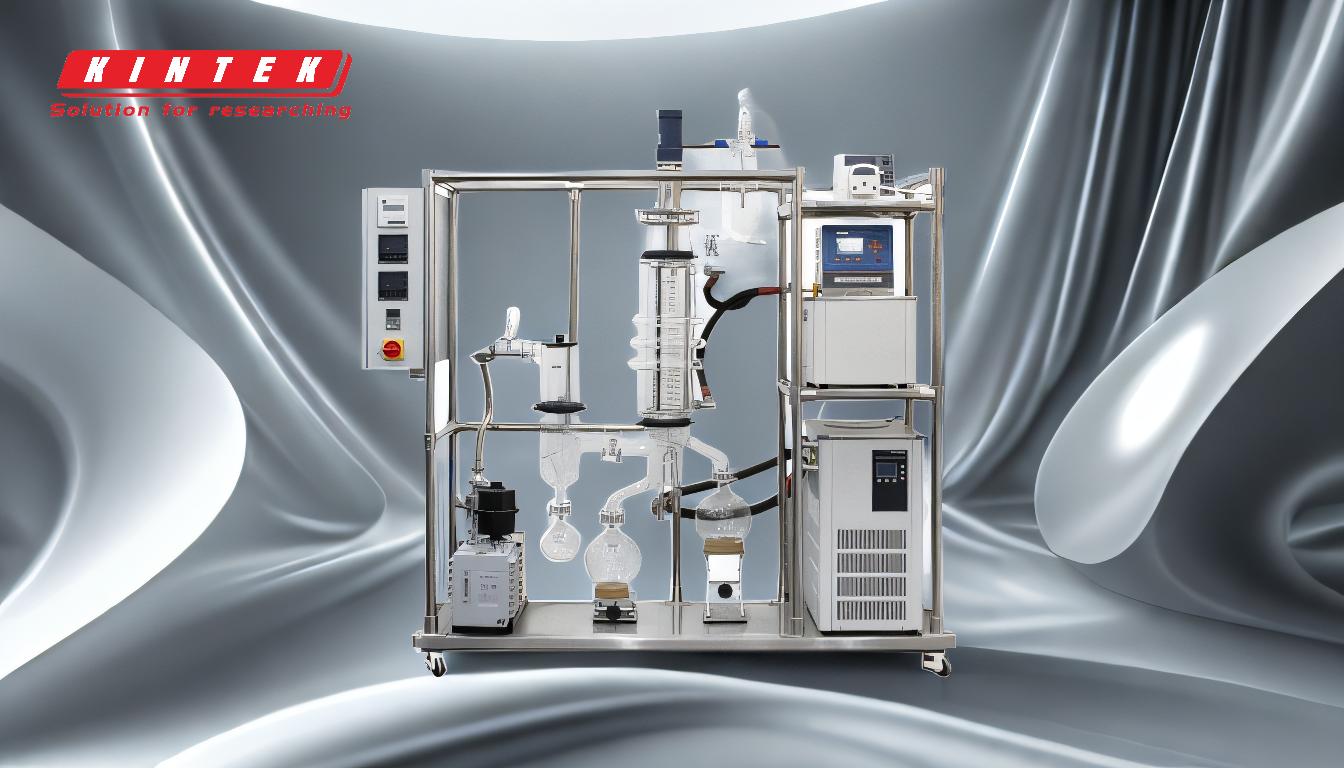Drying the dichloromethane (DCM) layer before putting it on the rotovap is a critical step in many chemical processes, particularly in organic synthesis and extraction. The presence of water in the DCM layer can interfere with the efficiency of the rotary evaporator (rotovap), leading to incomplete solvent removal, contamination of the final product, or even damage to the equipment. Drying is typically accomplished using a drying agent, such as anhydrous sodium sulfate or magnesium sulfate, which absorbs water from the organic layer. This ensures that the DCM is free of water, allowing for efficient and safe evaporation on the rotovap.
Key Points Explained:

-
Importance of Drying the DCM Layer:
- Prevents Contamination: Water in the DCM layer can carry impurities or residual reactants into the final product, reducing its purity.
- Enhances Efficiency: Water has a higher boiling point than DCM (100°C vs. 40°C). If water is present, the rotovap must work harder to remove both solvents, which can slow down the process and increase energy consumption.
- Protects Equipment: Water can cause corrosion or damage to the rotovap, especially if the equipment is not designed to handle aqueous solutions.
- Ensures Accurate Yield Calculation: The presence of water can lead to inaccurate measurements of the final product, as the weight of the water may be included in the yield.
-
How Drying is Accomplished:
- Selection of Drying Agent: Common drying agents include anhydrous sodium sulfate (Na₂SO₄) and magnesium sulfate (MgSO₄). These agents are chosen because they are chemically inert to most organic compounds and have a high affinity for water.
-
Procedure:
- After separating the DCM layer from the aqueous layer (e.g., using a separatory funnel), the DCM layer is transferred to a clean, dry flask.
- A small amount of the drying agent (e.g., a few grams of anhydrous Na₂SO₄) is added to the DCM layer.
- The mixture is swirled or stirred gently to ensure contact between the drying agent and the DCM layer.
- The drying agent absorbs the water, forming hydrated crystals (e.g., Na₂SO₄·10H₂O).
- The mixture is allowed to stand for a few minutes to ensure complete drying.
- The dried DCM layer is then filtered or decanted to remove the hydrated drying agent, leaving behind a water-free organic solution.
- Verification of Drying: To confirm that the DCM layer is dry, a small sample can be tested using a water-sensitive indicator, such as anhydrous copper sulfate (which turns blue in the presence of water).
-
Considerations for Optimal Drying:
- Amount of Drying Agent: Using too little drying agent may result in incomplete drying, while using too much can lead to unnecessary waste and potential contamination. A rule of thumb is to add the drying agent until it no longer clumps together, indicating that it has absorbed all the water.
- Time for Drying: Allowing sufficient time for the drying agent to absorb water is crucial. Rushing this step can leave residual water in the DCM layer.
- Compatibility with the Rotovap: Ensure that the drying agent used is compatible with the rotovap and will not decompose or react under the conditions of evaporation.
-
Alternatives to Drying Agents:
- Molecular Sieves: These are synthetic zeolites with a high affinity for water and can be used as an alternative to traditional drying agents. They are particularly useful for drying solvents that are sensitive to chemical reactions.
- Azeotropic Distillation: In some cases, water can be removed by forming an azeotrope with another solvent, which can then be separated using the rotovap.
By following these steps and considerations, the DCM layer can be effectively dried, ensuring a smooth and efficient evaporation process on the rotovap, and yielding a high-quality final product.
Summary Table:
| Key Aspect | Details |
|---|---|
| Importance of Drying | Prevents contamination, enhances efficiency, protects equipment, ensures accurate yield. |
| Common Drying Agents | Anhydrous sodium sulfate (Na₂SO₄), magnesium sulfate (MgSO₄). |
| Drying Procedure | Add drying agent, swirl, allow absorption, filter/decant. |
| Verification of Drying | Use water-sensitive indicators like anhydrous copper sulfate. |
| Optimal Drying Tips | Use the right amount of drying agent, allow sufficient time, ensure compatibility. |
| Alternatives | Molecular sieves, azeotropic distillation. |
Need help optimizing your DCM drying process? Contact our experts today for tailored solutions!










